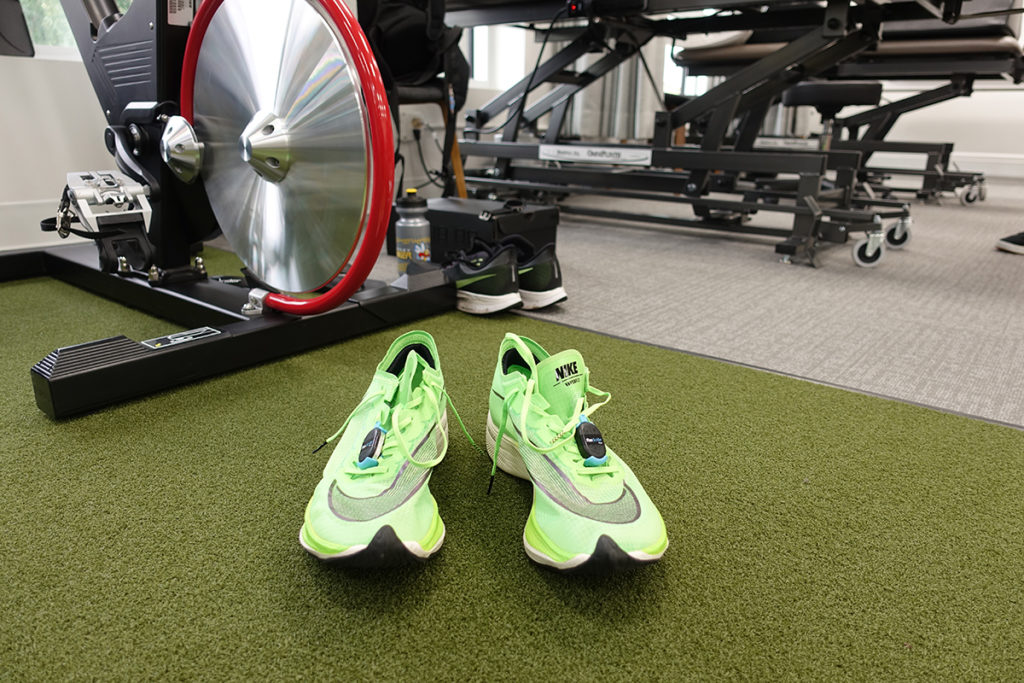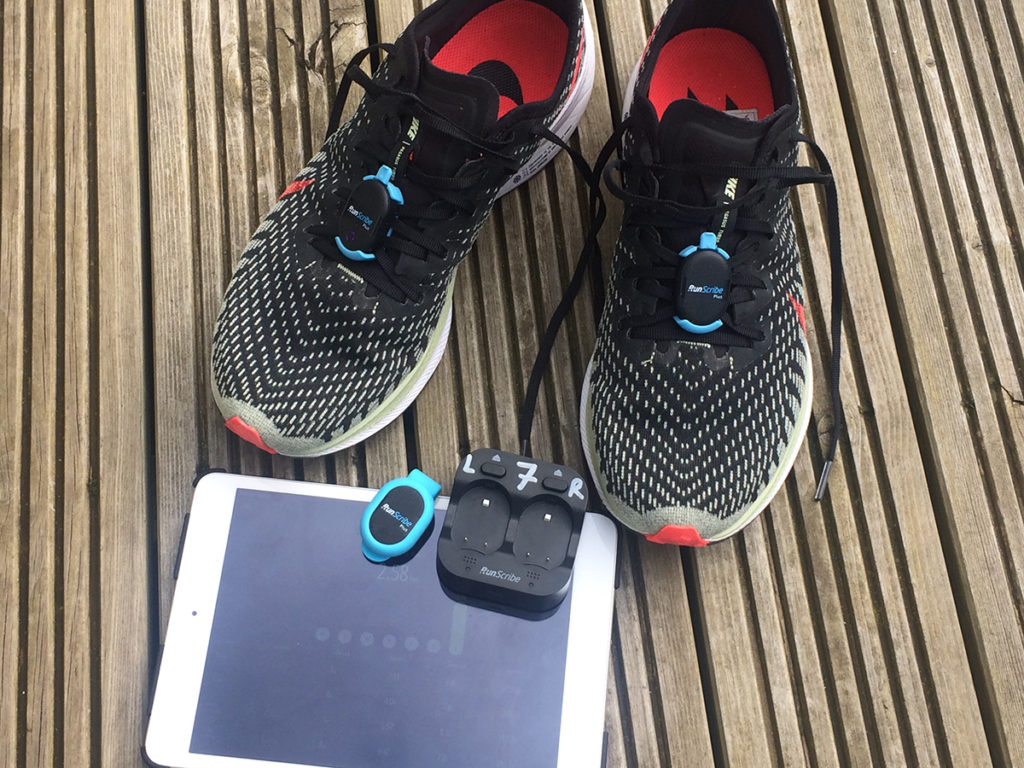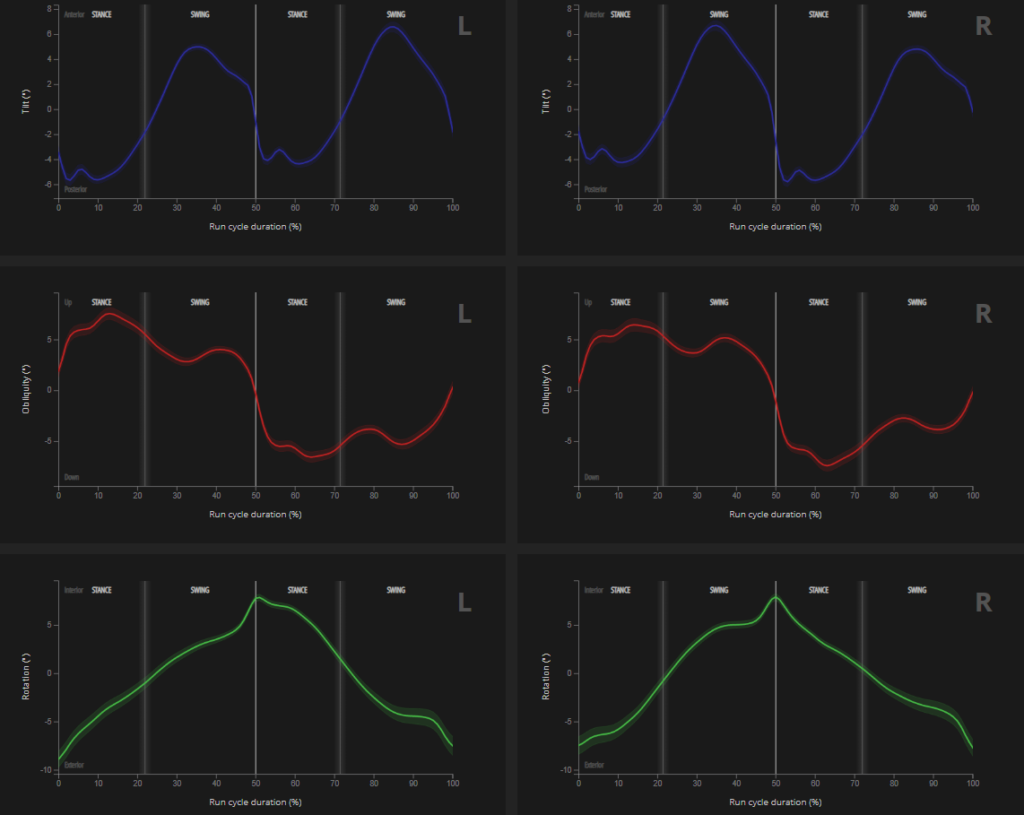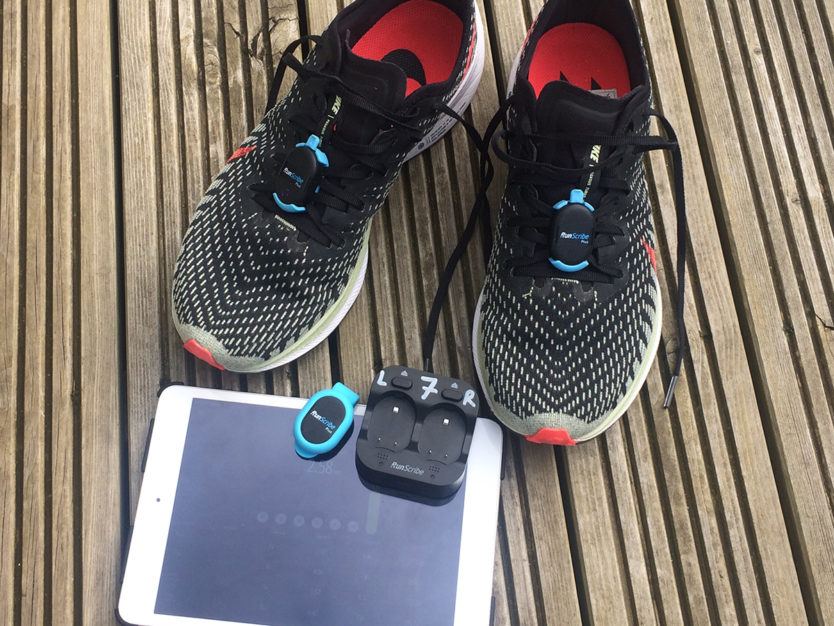Over the past 6 years RunScribe has evolved into a comprehensive tool for understanding kinetic and kinematic information coming from the shoes and hence also the feet. In many cases the metrics generated reflect processes happening locally at or close to the feet. Others such as contact time, impact, ground reaction force and leg spring stiffness are influenced from more distal body functions, in particular the hip-pelvic area. With enough practice analyzing RunScribe data and enough contextual information on the runner and workout it can be possible to draw insights on hip-pelvic function. However this carried the caveat of being very indirect and sometimes highly uncertain. Until now.

For some time we have worked towards upgrading RunScribe from a 2 pod system to include a sacral pod capable of directly measuring hip-pelvic movement. Confident that we are now at a level of accuracy and reliability that meets our expectations, we’re now launching the new 3 pod system that we call RunScribe Gait Lab.
Running injuries resulting from movement dysfunction can be driven by issues around the foot-ankle either in isolation or in combination with issues around the hip-pelvis area. And vice-versa. Whether you lean more towards the importance of the foot-ankle or more towards the hip-pelvis, both areas have the capacity to be highly influential. Collecting synchronized data from both areas simultaneously during running is therefore highly beneficial to a comprehensive assessment.

Our objective with this new pod is to provide you with the key data characterizing the motion of the pelvis as measured from the sacrum. 3 planes of movement are measured: obliquity, tilt and rotation. The metrics related to these 3 orientations will allow for interpretation of the level of pelvic control and the degree of asymmetry between the left and right motions. For example, when assessing contralateral pelvic drop (Trendelenberg) this will now mean that it is possible to quantify the amount of pelvic drop on each side, allowing you to assess whether it is significant, and to determine which side is problematic.

This new system will work much like the old. The third pod will pair in the same way, the 3 pods will have customized LED colors and be interchangeable and the results will appear within the existing run dashboard. The foot and sacral metrics are presented together as a full set of synchronized results, both in the current data tables and using the tabs at the top of the run summary. All other specifications such as charge time, storage, battery life etc remain unchanged.
So now that the 3 pod system is being set free we can’t wait to see what you can do with it! For our part, we will continually strive to provide the best tools possible to conveniently and affordably help people to reduce running injury risk.

